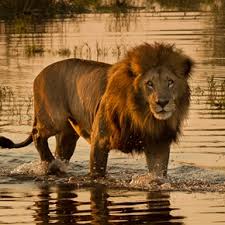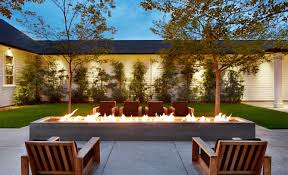Driving Cape Town’s Wine Route
We could have rented a car to visit the vineyards of Stellenbosch and Franschhoek, an hour’s drive from Cape Town, but the thought of driving on the left-hand-side of the road while downing glasses of wine did not thrill me. It was a wise move to hire a driver, especially when we realized that the drive is exquisitely beautiful with vineyards rolling to the base of jagged mountain peaks, dotted with the distinctive white Cape Dutch style architecture. Our driver, Malcolm Frye, picked us up in his comfy VW Van and off we went to Stellenbosch. Malcolm delved into the complex and often tragic history of South Africa while stopping at four very different wineries he had selected. He was a wonderful companion for the day, full of anecdotes from a very full life in southern Africa (ask him about his military stint in Angola and about his son, a pilot for Cathay Pacific). I’d highly recommend him for drives to the Wine Region, Cape Point, Hermanus, and the Garden Route.
Seeing the Art of Cape Town
On our first full day in Cape Town, Lisa and I took the sage advice of a South African art collector and hired Stephen Long as our guide for the day. Stephen is well known in the Cape Town arts community (and to the shaman of the Eastern Cape) as one of the most renowned bead dealers in the region. Many of the beads you find in the beadwork of South African art is actually imported from Venice, the Czech Republic, and now China. Our first stop was the South African National Gallery, where we viewed activist art created during the oppressive apartheid regime. One of the most disturbing pieces is the three life-sized figures with horns and no mouths called The Butcher Boys, created in plaster by Jane Alexander.
Then it was time see some of the impressive local crafts found in the city. The Gallery Shop, on bustling Church Street (48), is a gem of a small store selling colorfully beaded jewelry, sculpture, wall hangings, pillowcases, and more. Owner Lorin Strieman used to run the gift shop at the Natioanl Gallery and she has a great eye for contemporary South African craft. It’s hard not to purchase all the whimsical beaded animals at Monkeybiz. The pieces were created by impoverished, HIV-positive women who were trained as artists to make a living. It was wonderful to walk upstairs and see all these women sitting together and laughing while creating art. Just as alluring is the work at Streetwires, where sculpture of all sizes is created by wire and bead. Like Monkeybiz, you can walk upstairs to see the large group of artists at work. Bags in hand from all the goods we purchased, we visited the colorful houses and mosques found in the nearby Bo-Kaap neighborhood still home to a large Cape Malay population. All of our purchases are now back at our house, cherished from our memorable day with Stephen. We’re happy to pass along his contact information to anyone who’s interested in hiring him for the day.
Abercrombie and Kent Week—The Cherished Memories on Safari
Those close-up shots of leopards, lions, hippos, rhinos, elephants, and giraffes might have impressed my Facebook friends these past two weeks, but 5 years from now I won’t remember any of those animals. Okay, maybe that one rhino in the Okavango Delta we surprised who ran off in a blur. What I’ll remember is that marimba band playing solely for our group as we arrived for lunch at the Victoria Falls Hotel; my guide, Kebby, clearly enunciating the name of that colorful bird, the lilac-breasted roller; waking up to French-pressed coffee at Stanley’s; all those glorious sunsets, especially the one overlooking the Zambezi on the deck of Sussi and Chuma; heading back to our room at Chobe Chilwero after a long day of game drives and boat rides to find that a bubble bath had been prepared; jumping with young children in hand at the Zambian village of Nakatindi; and all those wonderful stories we shared at dinner with our new friends. These are the special moments I’ll remember and inevitably the driving force behind another trip to Africa some 2 years from now when thoughts about taking that long international flight have faded. I yearn to return to that continent and its people more than any other destination. It’s my spiritual retreat where I feel most alive. I want to thank Abercrombie and Kent for the opportunity this time.
Abercrombie and Kent Week—Living with Elephants and Other Philanthropic Projects
On the second day of our safari, I woke up at sunrise to the cacophony of high-pitched bird calls. French-press coffee arrived at my lodge at Stanley’s Camp and I drank a cup overlooking the high grasses of the Okavango Delta. After breakfast, our group of six was driven to a clearing where we soon stared in awe at a massive 11 ½-foot high, 5 to 6 ton elephant named Jabu. A gentle giant, Jabu was joined by two other elephants, the playful Thembi, and the oldest of the trio, 40 year-old Morula. The elephants were led by American Doug Groves and his South African-born wife, Sandi, two zoologists who adopted the threesome when culling operations in South Africa and Zimbabwe left them as orphans more than 25 years ago.
Abercrombie and Kent Week—Dining and Lodging at Our Four Sanctuary Retreats
We stayed at 4 different lodges in Botswana and Zambia, all with a distinct feel of their own and all perfectly situated in a pristine chunk of wilderness. Service was impeccable at all the lodges. Servers would greet you by your first name when presenting a rolled-up cool wash-cloth scented with mint, lemongrass, or lavender after each game drive. Dining went way beyond expectations, with fresh fruit in the morning followed by eggs and omelets anyway you like and thick lean bacon. All washed down with strong French-press coffee. Entrees at night included the local game, kudu, beef, fish, chicken, and good vegetarian choices like a tasty wild mushroom lasagna. Dinners were always served with a selection of quality South African wines.
Abercrombie & Kent Week—Our Wonderful Botswana Guide, Kebby Arabang
On safari, you have the choice of booking a lodge and going out on game drives with their respective guides or hiring a highly reputable tour operator like Abercrombie & Kent who will assign a private guide to your group for the duration of the trip. Obviously, there’s an extra cost involved, but if you’re splurging for this amazing opportunity, it’s important to do it right. Lodge guides I’ve had in the past have been hit or miss, depending on their knowledge of flora and fauna and communication skills in English. The guide A&K assigned to us on our travels to Botswana this past week was exceptional.
Abercrombie & Kent Week—The Diverse Terrain in Botswana, Zimbabwe, and Zambia
Having just returned from one on of the most memorable trips I’ve ever experienced, an 8-night journey with Abercrombie & Kent to Botswana, I get the added bonus of reliving cherished moments this week on my blog. Botswana was my 5th safari and by far the most diverse when it comes to terrain. Much of the trip revolved around water, which was a welcome relief to often jarring game drives on rutted roads. As soon as we arrived in the Okavango Delta, we were greeted with roads that were washed-out with water. That wasn’t a problem with our A&K guide, Kebby, who would drive though the streams like he was atop a duck boat, not a Toyota Land Cruiser. The maze of waterways dotted with palm trees on our first two nights at Stanley’s Camp reminded me of the Everglades. That is, until you spot a leopard up a tree or a giraffe in the distance. At the recently renovated Chief’s Camp (which I’ll report on later this week), we enjoyed meals while watching elephants and baboons cool off at the nearby watering hole.
Off to Cape Town and Botswana
 Talk to any experienced African safari guide and they’ll no doubt tell you that Botswana is the best country on the continent for going on safari. Along with Namibia, Botswana is one of Africa’s least populated wildernesses. The country’s enviable conservation philosophy endorses low-volume, high-revenue tourism, and significant benefits for local communities who live amongst the wild animals. Unlike Kenya’s Maasai Mara or Tanzania’s Ngorongoro Crater, which can often be overcrowded, head to Botswana and you’re not likely to see any fellow travelers out on game drives, walks, or boat rides. The Okavango Delta is a gigantic inland waterway, an island of green in an arid landscape. It’s home to large herds of elephants, some of the biggest lions in Africa, and enough variety of bird life to turn even the most dedicated big-mammal enthusiast into a bird lover. Tomorrow, Lisa and I are headed to Botswana on a 9-day safari with Abercrombie and Kent. We’ll be staying at four of their premier properties, Sanctuary Stanley’s Camp, Sanctuary Chief’s Camp, Sanctuary Chobe Chilwero, and Sanctuary Sussi & Chuma. After a 2-year renovation, Sanctuary Chief’s Camp reopened on June 1st and is now considered the Sanctuary Retreats’ flagship property.
Talk to any experienced African safari guide and they’ll no doubt tell you that Botswana is the best country on the continent for going on safari. Along with Namibia, Botswana is one of Africa’s least populated wildernesses. The country’s enviable conservation philosophy endorses low-volume, high-revenue tourism, and significant benefits for local communities who live amongst the wild animals. Unlike Kenya’s Maasai Mara or Tanzania’s Ngorongoro Crater, which can often be overcrowded, head to Botswana and you’re not likely to see any fellow travelers out on game drives, walks, or boat rides. The Okavango Delta is a gigantic inland waterway, an island of green in an arid landscape. It’s home to large herds of elephants, some of the biggest lions in Africa, and enough variety of bird life to turn even the most dedicated big-mammal enthusiast into a bird lover. Tomorrow, Lisa and I are headed to Botswana on a 9-day safari with Abercrombie and Kent. We’ll be staying at four of their premier properties, Sanctuary Stanley’s Camp, Sanctuary Chief’s Camp, Sanctuary Chobe Chilwero, and Sanctuary Sussi & Chuma. After a 2-year renovation, Sanctuary Chief’s Camp reopened on June 1st and is now considered the Sanctuary Retreats’ flagship property. Insider Tips on Napa Valley
 Guest Post by Kelli Hollingsworth
Guest Post by Kelli Hollingsworth